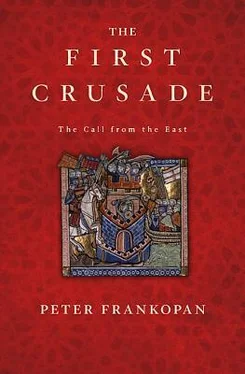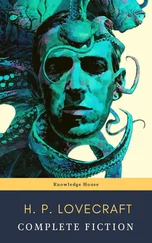It was imperative to rebuild bridges with Constantinople. One step was the forced deposition of the anti-Byzantine Daimbert as patriarch of Jerusalem and his replacement with Evremar, an elderly French priest, who was a more malleable character. 44But the key step came with the dispatch of an embassy to the imperial capital with the express aim of cementing an alliance with Byzantium. Baldwin resolved to approach Alexios ‘in the most humble way he could, and with mild entreaties ... appeal to the emperor of Constantinople about the Christians’ miseries’. 45High-ranking officials were sent to the capital, along with two pet lions as gifts, to appeal for help, particularly in the supply of provisions from Cyprus and other parts of the empire. An accord was reached with Alexios, who demanded guarantees that Baldwin’s ambassadors would repair the damage done to his relations with the papacy caused by the rumours about his supposed betrayals of the Crusaders. In return, he swore to ‘show mercy ... and to show honour and love to King Baldwin’. The good news was swiftly transmitted back to Jerusalem. 46
Alexios had his own reasons for reconciling with the Crusaders. Although Bohemond was safely out of the way, held captive by Turks in eastern Anatolia, Tancred was still proving to be a thorn in the emperor’s side. Using Antioch as a base, the knight had made significant inroads into newly recovered imperial territory in Cilicia, taking the town of Marash and moving against Laodikeia. 47This threatened to destabilise the new alliance between Constantinople and Jerusalem, with the result that senior Crusaders took steps against Tancred. Raymond of Toulouse tried to relieve Laodikeia on behalf of the emperor in 1102, but without success. 48Baldwin of Le Bourg openly declared himself to be an enemy of Tancred and set about raising money to pay Bohemond’s ransom in the hope that the latter would return to Antioch to stamp his authority over his feisty nephew. 49
Initially, this was precisely what happened. Released from captivity in 1103, Bohemond resumed control of Antioch, sidelining Tancred, establishing cordial relations with Baldwin in Edessa and taking part in joint attacks in northern Syria. 50However, things soon started to go wrong. Bohemond responded petulantly to an embassy sent from Constantinople in late 1103 or early 1104, raising concerns about his willingness to co-operate with the agreement reached between the emperor of Byzantium and the king in Jerusalem. 51Bohemond’s relations with other leading western knights also began to deteriorate after his release, who took a dim view of his attempts to expand his territories. Things were so bad that one eyewitness wrote of the complete collapse of relations between the Crusaders at this time. 52
Matters took a decisive turn in the early summer of 1104 when Bohemond and Tancred commanded a force from Antioch in support of an attack, led by Baldwin of Le Bourg and a contingent from Edessa, on the town of Harran in south-eastern Asia Minor. When the westerners were comprehensively routed and Baldwin was taken captive, Bohemond and Tancred merely looked on from a safe distance before withdrawing – at least according to the Muslim sources. 53
The defeat at Harran was a major setback for the Crusaders. The Christians were disheartened by their loss, reported one chronicler in nearby Damascus, their resolve shaken by the Muslim victory. It was a huge boost to the morale of the latter, who took this as a sign that fortunes were finally reversing. 54That reversal had a wider impact, however, for it seems to have profoundly destabilised the delicate balance of power in the Latin settlements in the Holy Land and their relations with Byzantium. Part of the problem was that following Baldwin’s capture and that of other senior officers who had been stationed with him in Edessa, Tancred moved north and took possession of the town. Although the inhabitants of Edessa do not appear to have been unduly discomfited by this, his arrival would not have been welcomed by Alexios – even though he had himself taken advantage of the chaos finally to restore imperial authority in Cilicia and Laodikeia. 55
A more serious problem, however, came from Bohemond’s response to the defeat at Harran. The Norman seems to have realised that with Antioch secure, Edessa under the control of his nephew, Baldwin out of the way in captivity and the Christian hold on Jerusalem looking precarious, an unmissable opportunity had opened up for Bohemond to make himself master of the Crusader states in their entirety. He therefore refused to pay a ransom for Baldwin of Le Bourg when approached by his captors, and instead launched another assault on Laodikeia, though this was unsuccessful. 56In the autumn of 1104, he gathered his retinue in the Basilica of St Peter in Antioch. ‘We have irritated the two richest powers in the world’, he said; however, there were not enough men in the east to continue to hold out against Byzantium and Persia. ‘We must search for help from the men across the sea. The people of the Gauls must be roused. Their bravery will arouse us, or nothing will.’ Bohemond would head for Europe and raise an army of his own. 57His eye was on Jerusalem and Constantinople – and possibly both.
According to Anna Komnene, Bohemond was so convinced that the emperor would take revenge for his treachery during the Crusade that he travelled home in secret. He even spread reports that he had died and had a coffin designed which purported to be carrying his corpse. As his ship passed through imperial waters, he lay in the sarcophagus alongside a dead chicken whose rotting carcass lent the coffin a powerful and unmistakable smell of death. 58
As soon as he made land in Italy, Bohemond began gathering support for a new military expedition, lighting the same tinder that Urban had so skilfully ignited in the mid-1090s. On that occasion, the purpose of the terrible descriptions of the dangers in the east, the ravagings of the Turks and the plight of the Eastern Church, had been to help Byzantium. Now, the aim was to destroy it.
12
The Consequences of the First Crusade
The participants in the expedition to Jerusalem were feted when they returned home. News of their deeds was met with wild celebration. Songs about the Crusaders’ successes and the capture of Jerusalem were composed in central France, forming the basis of the epic song cycles of the First Crusade, such as the Chanson d’Antioche and the Chanson de Jerusalem . 1The exploits of the Crusaders were also commemorated in a rash of new religious endowments and foundations in western Europe made by those who had returned from Jerusalem. Robert of Flanders refounded a monastery close to Bruges, dedicating it to St Andrew in thanks for the saint’s help at Antioch in 1098 and his role in finding the Holy Lance. 2Crusaders brought countless relics with them back from Jerusalem, physical evidence not just of the success of the campaign, but of a new direct link between the churches and monasteries of Europe and the Holy Land. 3
The returning Crusaders maximised the political capital gained from their exploits. Fulk V of Anjou, Robert of Flanders and Rainold of Château-Gontier were just three of those who adopted the epithet ‘Jerosolimitanus’ when signing acts and charters after their return from the Holy City. 4Others sought to benefit vicariously from the kudos of the returning knights. In the first years of the new century, Philip I of France married off four of his children to prominent Crusaders or to the daughters of leading figures who had fought their way to Jerusalem. His heir, the future Louis VI, was married to the daughter of Guy of Rochefort, who took part and evidently did well in the expedition of 1101; 5another of the king’s sons, Philip, Count of Mantes, married the daughter of Guy of Trousseau – whose career in the east was rather undistinguished, to put it mildly. 6
Читать дальше











